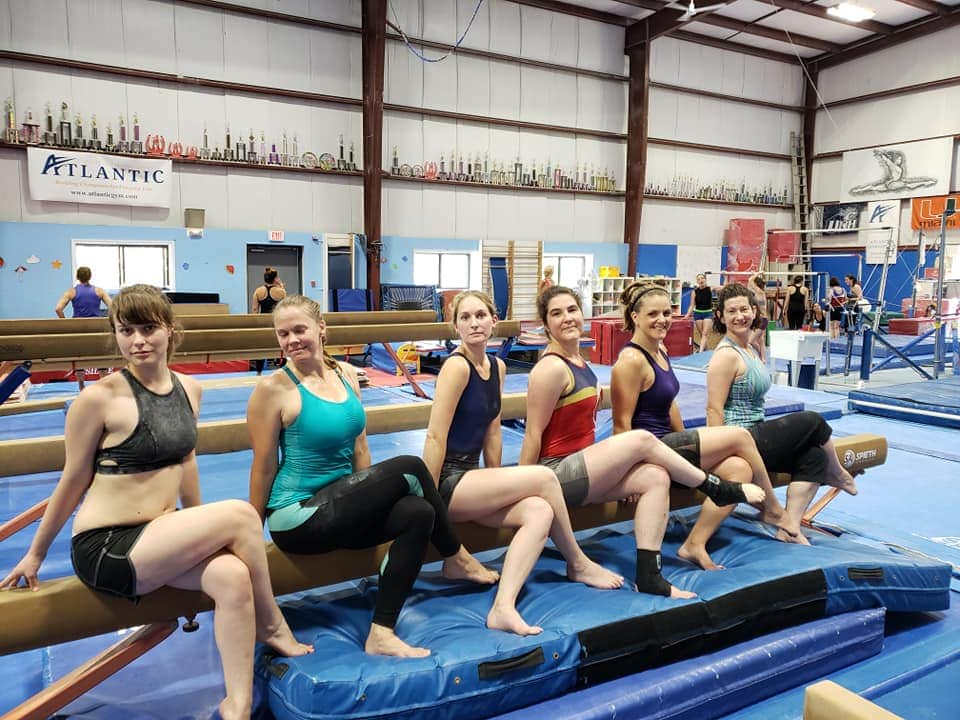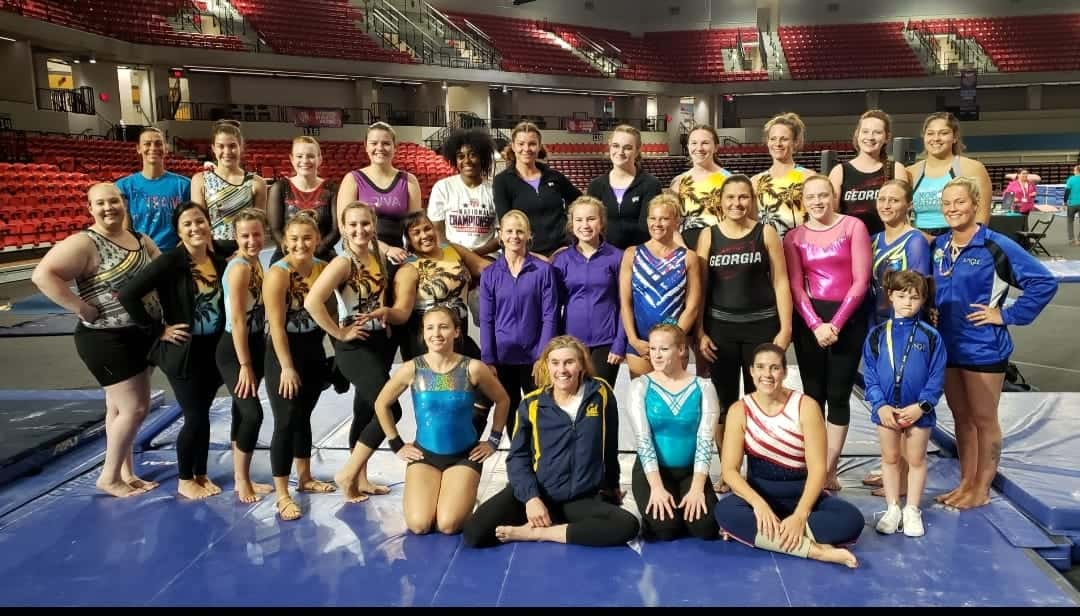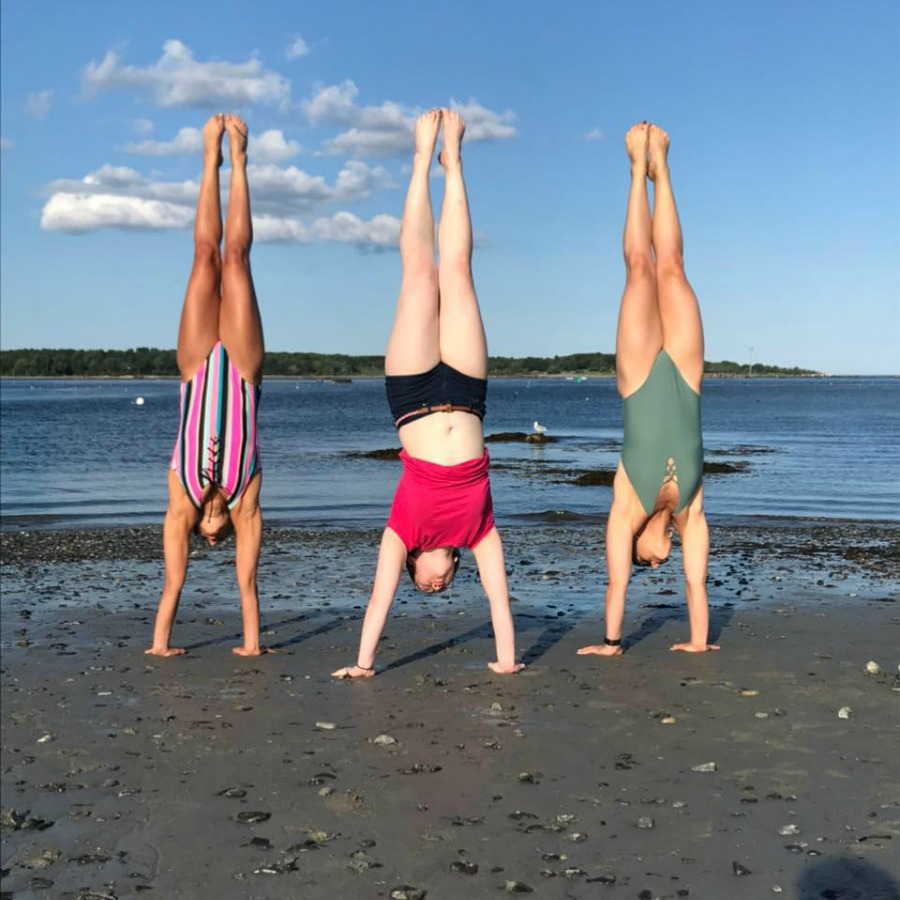- Home
- Various Ways to Compete
- Making Routines
| search engine by freefind |
making competition routines for adult gymnastics
a guide to constructing your own routines for an upcoming meet
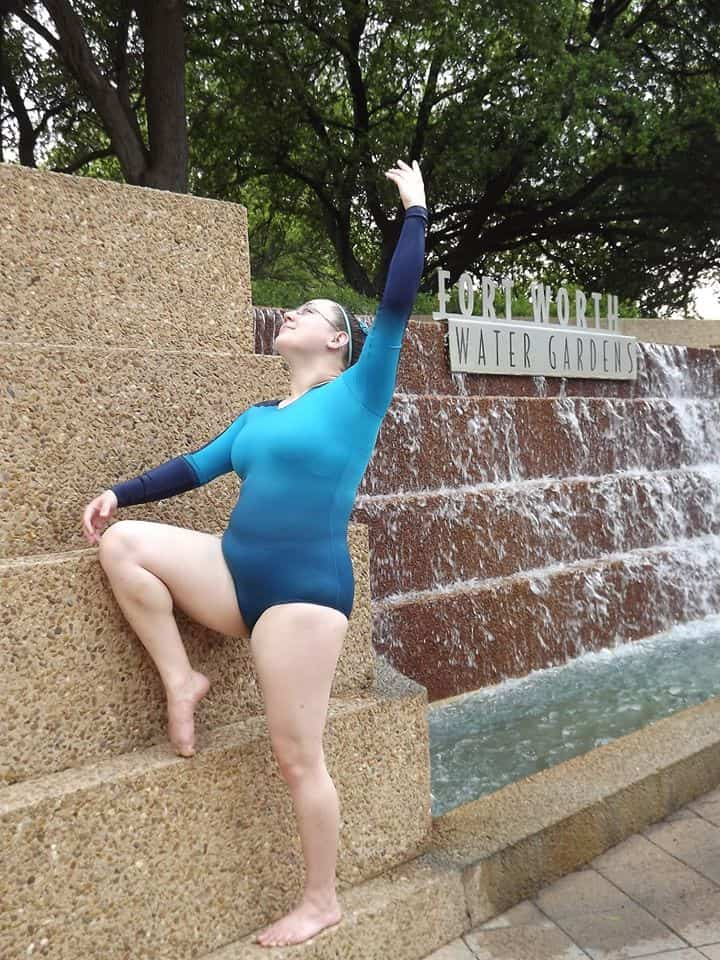 Danelle strikes a pose before her NAIGC Nationals.
Danelle strikes a pose before her NAIGC Nationals.For many of us adult gymnasts who wish to compete, we are somewhat on our own. Working mostly out of open gyms or splitting our time between classes at several different gyms can make it difficult to find the coaching support necessary to have a routine “made” for you. Even for those of use who do have access to a coach, constructing and choreographing your own routines can be a rewarding experience that gives you more personal ownership in the gymnastics you’re doing.
However, it can be a fairly complicated task, with a lot of considerations to take into account. Read on for a guide to some strategies I have found useful when in this situation. [Note: The examples I give will be biased towards the WAG situation in the US, because that is where I compete and coach, but the general principles apply in any system.]
step 1: figure out what you need.
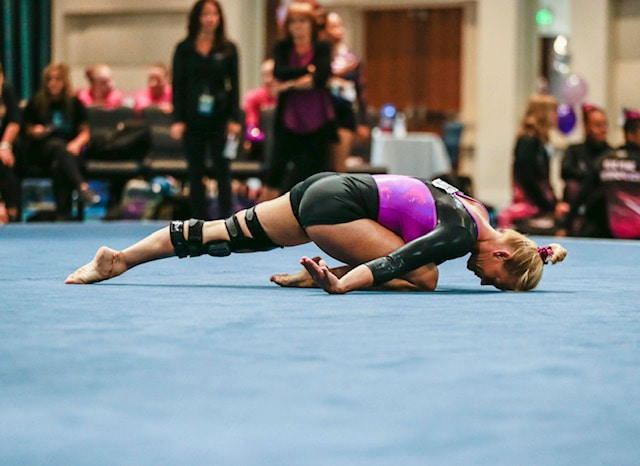
It is nearly impossible to construct a routine that will score well if you don’t know what the requirements are. To find your way to them, ask yourself a few questions:
- What league are you in? Each league has its own set of levels and requirements. Common ones for adults in the US include USAG’s Developmental Program (DP - rules also used by AAU and NAIGC) and Xcel (rules also used by AAU); NAIGC Developmental; USAIGC; and NGA. Most of these leagues have websites with useful resources regarding their levels and requirements.
- What level are you competing? What are its skill and special requirements? Levels with optional routines will typically have value part skill requirements (specifying the number and value of skills the routine must have, eg. 5A, 1B for DP L6), and special requirements (a requirement for specific types of skills or combinations the routine must contain). Routines which meet all of their skill requirements and special requirements will receive the base score. For lower levels this is a 10.0, but for some advanced levels, such as DP 9 and 10, the base score is less than 10 and additional bonus credit is necessary to start from a 10.0.
- Are there any bonus requirements, UTL or composition deductions, difficulty restrictions, etc.? As mentioned above, some levels require bonus credit for exceptionally difficult skills and combinations in order to start from a 10. At some levels, you will need to derive some bonus from a difficult skill and some from a difficult combination, rather than being able to use combos to avoid doing any D/E skills or vice versa. Up-to-level and composition deductions are not part of the start score, but if your routine is designed in a way that sets you up to get one at every meet, it’s essentially equivalent to having a lower start value, so they still deserve your attention. Most levels below DP 10 and its equivalents have difficulty restrictions, where categories of skills judged too difficult to be reasonable for the level are not allowed for safety reasons - including a restricted skill in your routine is a major deduction, so watch out for these!
Below is a sample of the DP Optional Requirement and Cheat Sheet charts for L9, showing many of the concepts discussed above. It is better to look at a full Code of Points if one is available to you, because some specifics are only explicitly laid out in the Code, but these abbreviated resources and the equivalent ones for other leagues and levels are still very helpful for quick reference. (If you train at a gym with a competitive team, they probably have a CoP you can look at upon request. Just make sure you are looking at the correct CoP for your league - Xcel, DP, USAIGC, etc.)
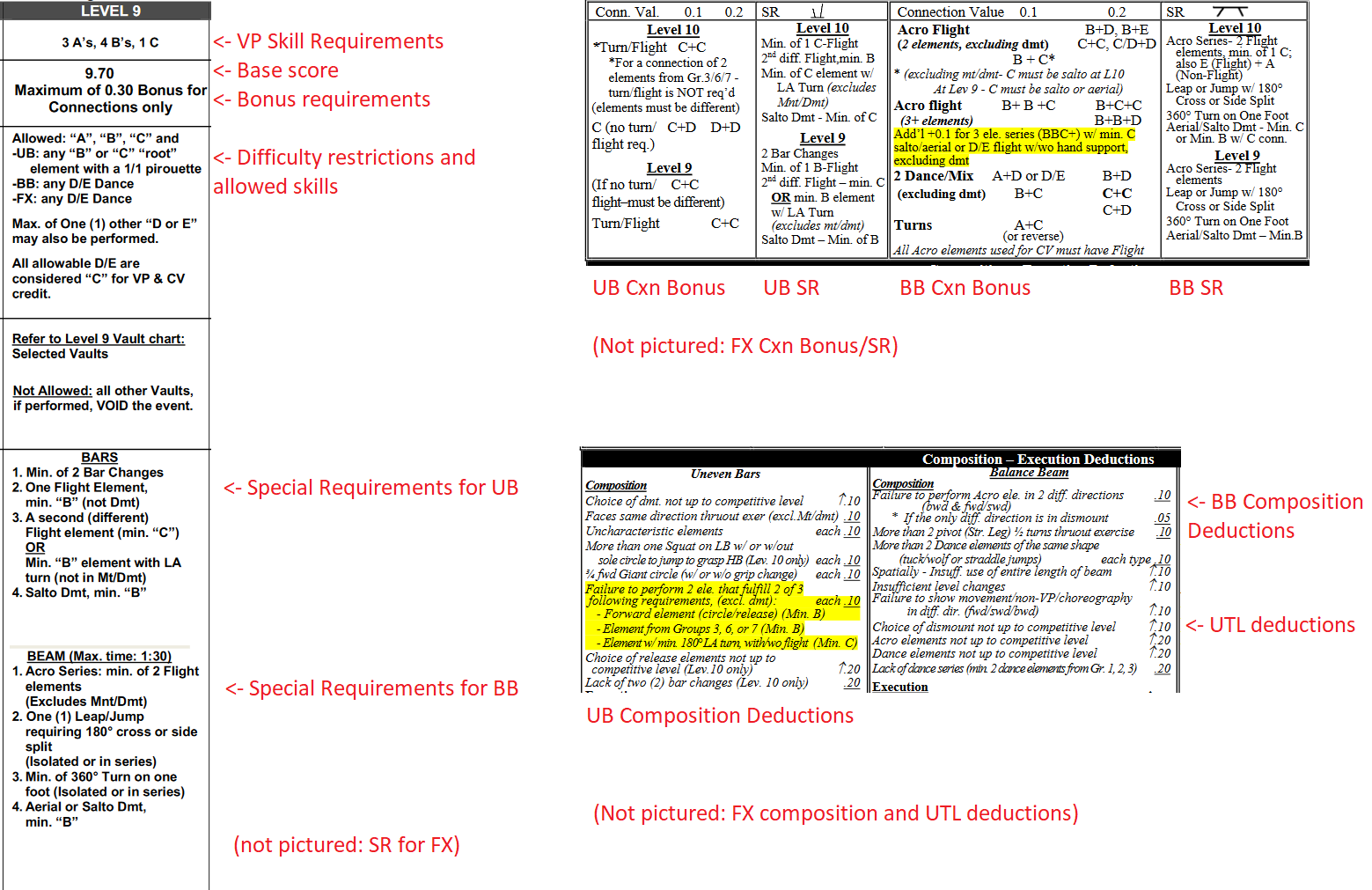
step 2: Use smart construction and keep the routine simple
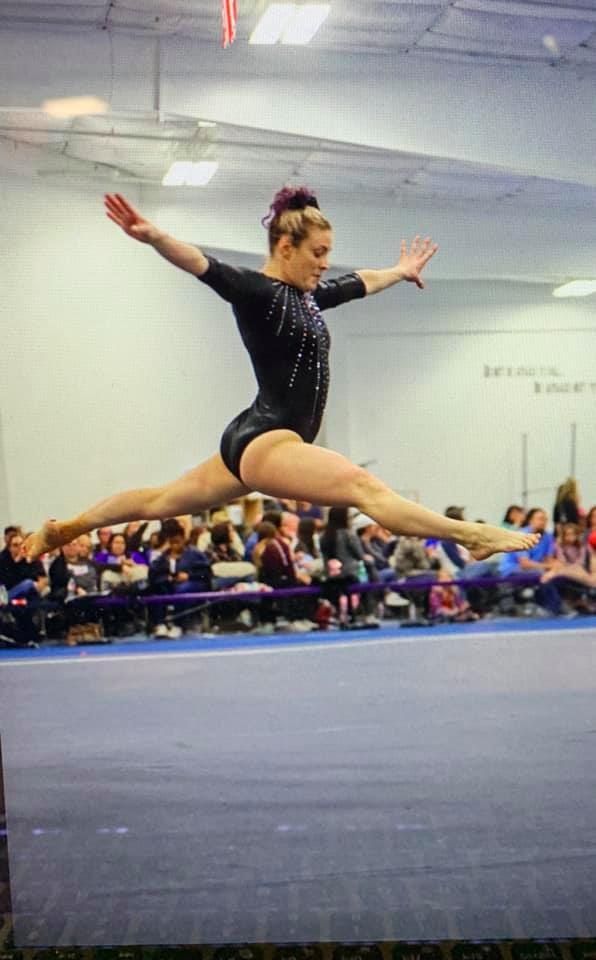
This will make the routine easier to remember, and help it score better. Here are some tips:
- Avoid unnecessary skills. Showing off is fun, but the more skills you use, the more opportunities the judges have to take deductions - and the more tiring the routine is! A very efficient routine will fit all special requirements, up-to-level skills, and bonus needed into the skills that satisfy the value part requirements. Be very careful on floor and beam, where moves intended as choreography only might actually have skill value and be subject to deductions as a result.
- As something of a counter to the previous point, judges do like to see some creativity and expression in skill choice - if you know you are confident with a unique skill, feel free to include it. Just remember to weigh the risk against the benefit.
- Be judicious about UTL and composition deductions. Most of them are only a small value (.1-.2), so taking the hit can sometimes be better than going for a skill you can barely do that is likely to result in a bigger deduction. However, they do add up quickly - if you are struggling to meet so many of them that you are looking at .5 or more in these deductions, it might be a good idea to consider the next level down.
- If you need connections, make sure they are practical. Some skills just don’t connect well - for example, it is very difficult to rebound a back tuck out of a double back or similar skill on floor exercise. If you try to use two skills that don’t connect nicely for a connection you need for your SR or CB, you could wind up consistently getting deducted for a slow connection or having it completely devalued!
By this point, you should have an idea of the list of skills you would like to include in your routine, and it’s time for the next step.
Step 3: Constructing the actual routine

Now that you know what you need, and you have some ideas for how to keep the construction smart, it is time to sit down and figure out exactly what your routine will look like. There are plenty of different ways to do this, but I will walk you through what I find easiest.
- Set up a worksheet for the routine to help you understand what you need. Here is a sample one for L6 Beam, to help you understand the process. A sample of what the worksheet might look like appears below.
Athlete’s Name: Suzie Sample Level: JO 6 Event: Balance Beam
Minimum skill requirements for base score of 10.0: 5A 1B
List all skills to be used in the routine, in order, with values:
- Front walkover to lie on back mount - A
- Split jump - B
- Cross handstand - A
- Back walkover - A
- Full spin in coupe - A
- Gainer ½ dismount - B
Event SR: Skill/combo fulfilling SR:
Acro series or flight (3) + (4)
Jump/leap w/180° split (2)
Minimum 360° turn on one foot (5)
Salto or aerial dismount (6)
Bonus needed: None Fulfilled with: N/A
Composition deductions: None Fulfilled with: N/A
UTL deductions: None Fulfilled with: N/A
Final start value: 10.0
Draw the spatial progression of the routine on the balance beam.
 Note - please exchange "JO L6" above to "DP 6"
Note - please exchange "JO L6" above to "DP 6"You can see how this lays out the skills used, how they meet the requirements, and the basic structure of the routine in time and space, in a clear, easy-to-read format. All that is left is to fill in the choreography! You can make your routine sheets on the computer as shown here, but they’re just as easy to write out by hand. Once you have your blank routine worksheet set up, it is time to take the unordered list of skills you would like to perform, and turn them into an actual routine.
- To do this, you must think about your skill distribution in time and space. Some leagues and levels have composition deductions specifying that difficulty should be evenly distributed across a routine and that the gymnast must make use of the entire apparatus, but these are good principles even when there is no deduction riding on them.
- For the distribution in time, you want to spread your difficulty out across the routine and, when applicable, vary the types of skills (dance vs. acro, circles and pirouettes vs. releases and transitions) as well. Note in the example above how there is one B skill near the beginning of the routine and another towards the end, and there is no one chunk of all the dance or all the acro.
- For the distribution in space, it is important to utilize the entire apparatus and all dimensions available to you - in the example above, the gymnast will travel to both ends of the beam and perform skills at each end, as well as in the middle. She will also face both directions along the apparatus’ length, and because her mount ends lying on her back, she will have some low-to-beam work that utilizes height as a dimension. When building UB routines, you should consider the amount, type, direction, and complexity of work done on each bar. On floor you should try to make use of both diagonals and touch each of the four triangles created by these diagonals at least once, and you should again make use of level changes in the dimension of height. (The way I draw my UB for the routine sheets is a side view, and for FX I draw the mat top-down.)
- The importance of these considerations varies with level. A DP 9 or 10 performing a complex routine would be expected to give them more consideration than a low level Xcel doing four or five skills total. For the lowest levels it is perfectly acceptable (and, given time limits, often necessary) to just perform the required skills as a simple straight-line sequence.
- Make sure you are putting your skills in a practical order. This means you should pay attention to things like the direction you are facing and swinging on bars (don’t jump to high bar, do a ½ pirouette, and then try to do a back flyaway dismount unless you fancy a broken bone) and the amount of space you have in the direction you are working on beam and floor (don’t try to do a back handspring swing-down when you only have a foot of beam behind you, you are not Deng Linlin).
- When putting together a floor routine, it is also important to have an idea of where your tumbling and dance passages will fit into the music, but preparing and choreographing a floor routine is enough material for an article all its own - hopefully coming soon!
I hope this has been helpful for folks who are new to building their own routines. There are links to additional resources you might need to implement the above tips in the next section. If you still have questions, feel free to come ask them in our adult gymnastics Facebook group - it is full of experienced competitors and coaches who will be happy to help you out!
to see video of sample routines for various levels
Check out this page!
You can also look here at submissions from a 2024 virtual meet.
links to league-specific resources for making competition routines for adult gymnastics
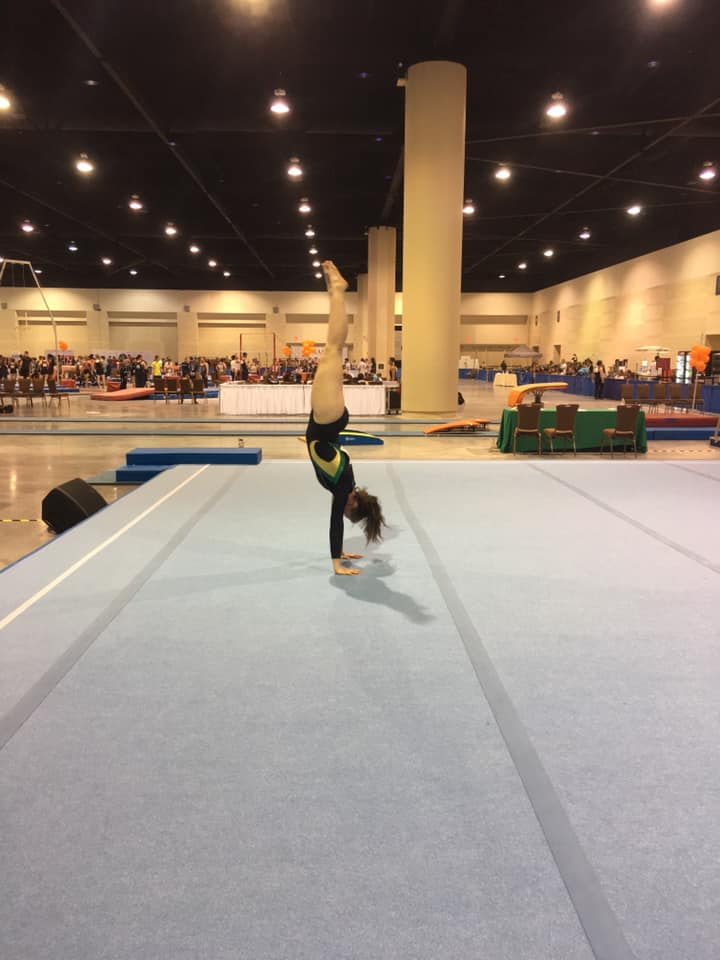
USAG Xcel
Purchase a USAG XCel Code of Points
usag DP
naigc
NAIGC Mens Progressions and Example Routines For Beginners Document
NAIGC Mens Progressions and and Example Routines For Beginners Videos
Mens Routine Construction Guide
FIG Code of Points - any NAIGC rule modifications are noted in rules links above
NAIGC Facebook Group for Questions
NAIGC Skills and Drills Facebook Group
usaigc
aau
Did you know we have a gymnastics camp that's exclusively for adults? We welcome competitive as well as recreational gymnasts. Visit this page to learn more!
Article by Danelle Pecht, Just Like Fine Wine Adult Gymnastics Group Moderator, Adult Gymnast and Gymnastics Coach
- Home
- Various Ways to Compete
- Making Routines
Disclaimer: Adult gymnasts and coaches give advice and suggestions on this page. By reading and implementing the information, you assume all liability for injury. The advice given is for educational purposes only. Please check with your in-person coach and ensure that you have the proper pit, mats and/or spot available before trying any suggestions. If you don't agree to these terms, do not attempt anything that you see on this page.
Recent Articles
-
USAG has no upper age limit in gymnastics
Dec 12, 24 08:56 AM
USAG has no upper age limit in gymnastics as long as the athlete is a member in good standing and has a coach. -
The Original Adult Gymnastics Camp: 2024 Edition
Jul 31, 24 10:07 AM
Come inside The Original 2024 Adult Gymnastics Camp and see what all the talk is about! -
Physical Preparation Prerequisites for Adult Gymnastics Class
May 09, 24 09:04 AM
Check out suggested physical preparation prerequisites for adult gymnastics class, written by a personal trainer and adult gymnast.

